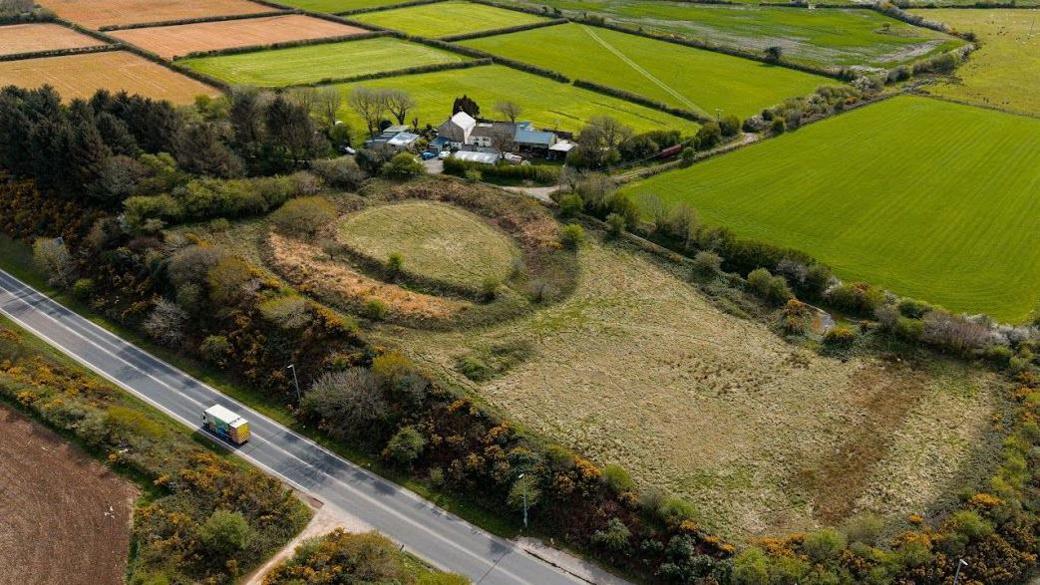Work begins on hidden Neolithic stone circle dig
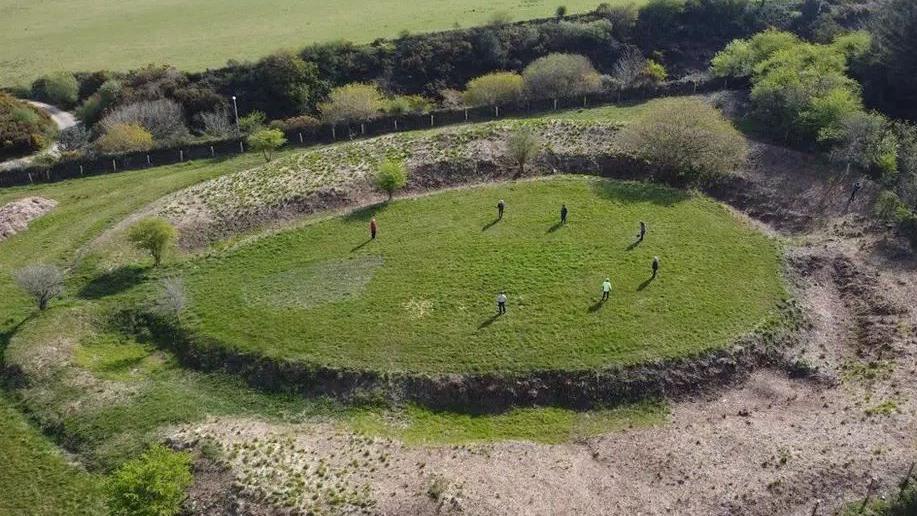
Possible traces of a long-vanished stone circle at the site were discovered in 2022
- Published
Work has started on a project to unearth the secrets of a prehistoric ritual site in Cornwall.
Described by experts as the county's "ancient sacred heart", Castilly Henge is believed to have been built during the late Neolithic period - about 3,000 to 2,500 BCE (Before Common Era).
More than £40,000 of National Lottery funding was awarded to Cornwall Heritage Trust (CHT) to excavate a hidden stone circle at its centre earlier this year.
Carolyn Kennett, CHT's site project manager, said: "Neolithic henges are incredibly rare, so this is a really exciting moment."
Is there a Bronze Age stone circle in Bodmin?
Located just off the A30 near Bodmin, the substantial oval embankment that makes up Castilly Henge is believed to have been once used as an amphitheatre-like setting for gatherings and ritual activities.
Its significance continued into the Early Bronze Age (circa 2,400 to 1,500 BCE) when several high-status burial mounds or barrows were built close by.
Previous researchers also suggested that the site might have been used as a medieval open-air theatre known as a plen-an-gwari, as well as fortified housing for cannons during the English Civil War.
The four-week archaeological excavation, which is a collaboration between the CHT, Cornwall Archaeological Society and Historic England, aimed to delve deeper into the monument's backstory, project leaders said.
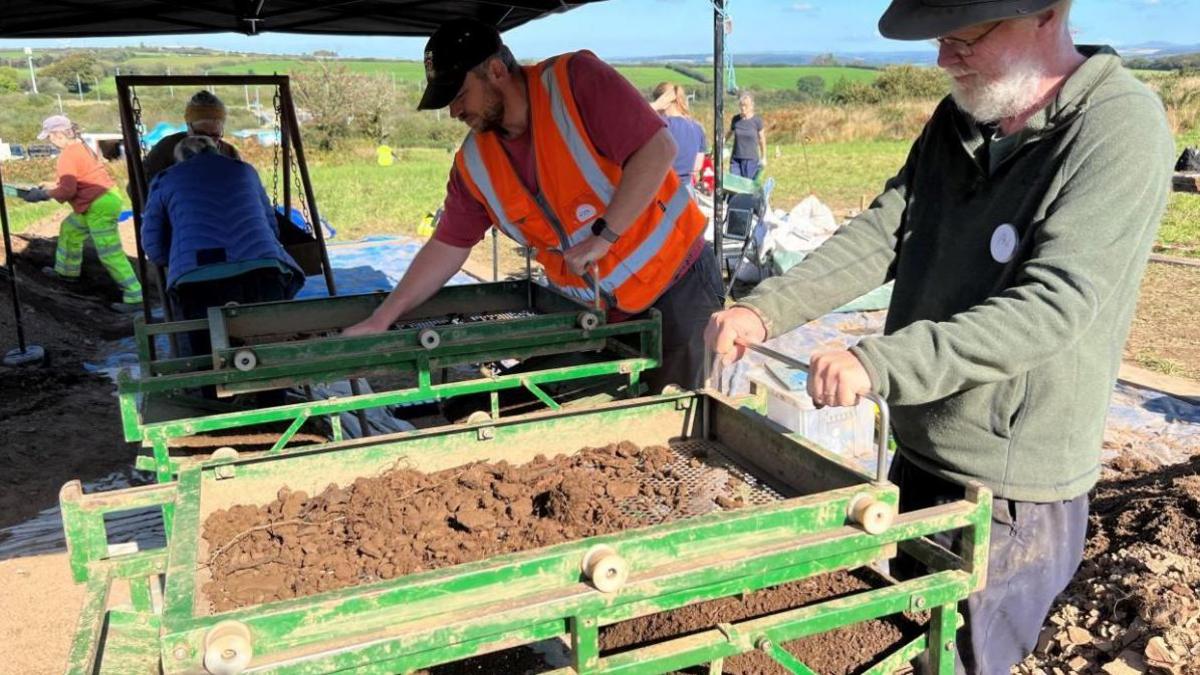
A large team of volunteers and experts are working to excavate the site
Possible traces of a long-vanished stone circle at the site were discovered in 2022, of which only one other example is known to survive in Cornwall.
Ms Kennett said she hoped that the henge - which is at risk from invasive vegetation and nearby road infrastructure - could be saved for future generations.
"Our goal is to fundraise to purchase this site and to open it up to public," she said, adding that more than £10,000 of an overall £50,000 target had already been raised.
Dr Olaf Bayer, senior archaeological investigator for Historic England, described the henge as offering a "direct visceral connection" to our ancestors.
"To discover and hold in your own hands the very tools people of the past had used - it's the kind of stuff that makes the hair stand up on the back of your neck," he said.
Follow BBC Cornwall on X, external, Facebook, external and Instagram, external. Send your story ideas to spotlight@bbc.co.uk, external.
Related topics
- Published6 November 2024
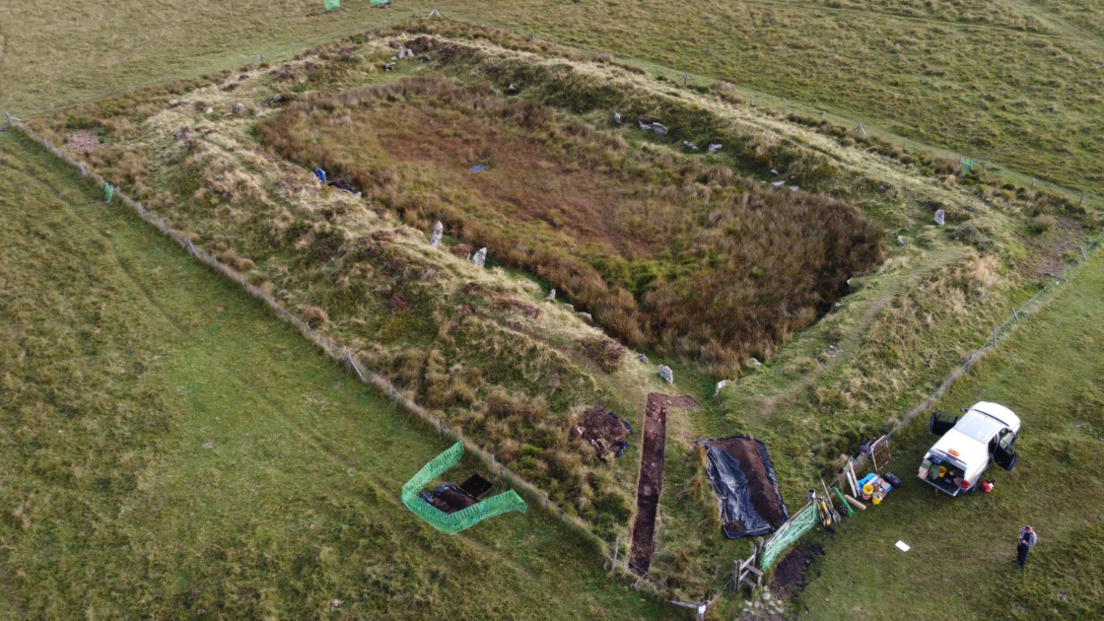
- Published27 January 2024
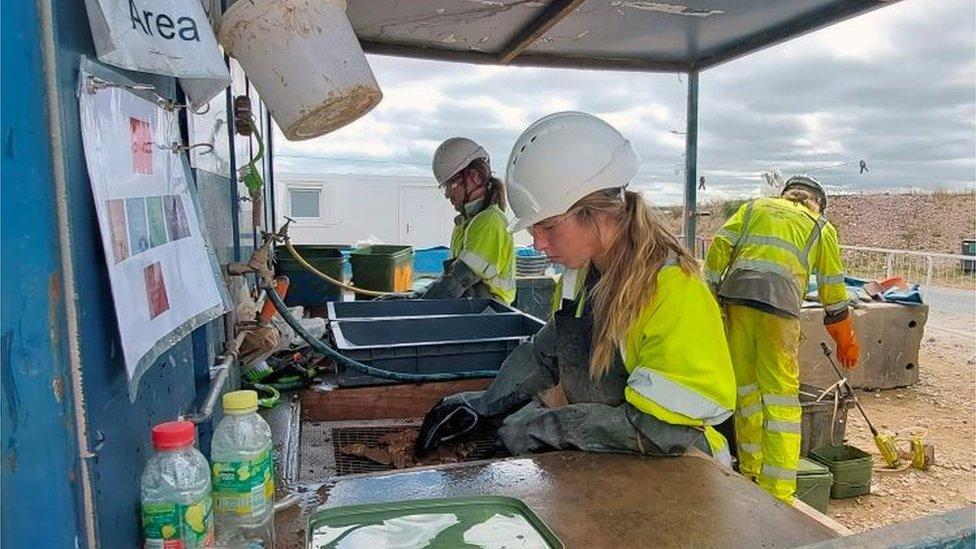
- Published13 June
